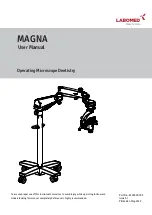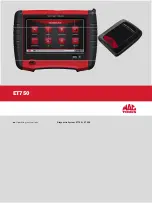
Chapter 4
Developing Your Application
©
National Instruments Corporation
4-5
Note
T&M Explorer includes special settings that you must use for low-level functions
and memory sharing. Consult the T&M Explorer online help for information on setting
these up.
Notes about VME Support
To use VME devices in your system, configure NI-VXI to see these devices
by using the
Add Device Wizard
in T&M Explorer. VME devices with
two blocks of memory in the same address space require two entries.
You can also specify which interrupt levels the device uses. VXI and VME
devices cannot share interrupt levels. You can then access the VME device
from NI-VXI or NI-VISA just as you would a register-based VXI device,
by specifying the address space and the offset from the base at which you
have configured it. NI-VISA support for VME devices includes the register
access operations (both high-level and low-level) and the block move
operations, as well as the ability to receive interrupts.
Compiler Symbols for NI-VXI
You may need to define some symbols so that the NI-VXI library can work
properly with your program.
Note
Skip this section if you are programming with NI-VISA only. NI-VISA does not use
these symbols.
You can define the symbols using
#define
statements in the source code
or you can use either the
/D
or the
-D
option in your compiler (both the
Microsoft and Borland compilers support the
/D
and
-D
options). If you
use
#define
statements, you must define the symbols before including
the NI-VXI header file
nivxi.h
. If you use the makefiles to compile the
sample program, the makefile already defines the necessary symbols.
The
VXINT
symbol is required. You must define it when using the
Microsoft C or Borland C compiler.
VXINT
designates the application as
a Windows NT/98 application.
Interrupt Handling
VISAint.c
VXIint.c
Trigger Handling
VISAtrig.c
VXItrig.c
Table 4-1.
NI-VXI/VISA Examples (Continued)
Coverage
NI-VISA
Example
NI-VXI Example
















































